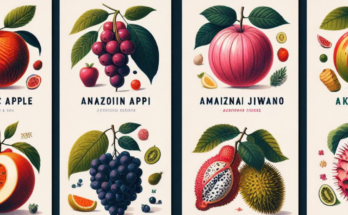Is your crystal ball ready? Let’s look closer at the top 10 programming languages of the future, analyzing their strengths, flaws, and where they’ll shine in the next years. Prepare, code warriors, because the future is calling!
1. Rust:
This behemoth isn’t just about muscles; it’s about building secure, high-performance systems for your most important tasks. Consider operating systems that hum like a Swiss watch, browsers that fly like greased lightning, and games that push the limits of graphical fidelity.
That is Rust’s realm. But be warned: the learning curve can be steep. Consider it like practicing a martial art: the rewards are enormous, but the commitment is genuine. That’s why it is number one in our top 10 programming languages of the future list.
2. Swift:
Apple fans can rejoice! Swift is your ticket to iOS and macOS’ promised land. This exquisite language is like a sleek racing car: fast, concise, and designed for speed. You’ll be creating gorgeous apps in record time, wowing consumers and making your other developers jealous. Remember, Swift flourishes within the Apple ecosystem, so going out may necessitate other expertise.
Swift isn’t the only language of the future, but it’s a bright spot in the Apple world. Master it, leverage its capabilities, and watch your coding career soar to new heights. The future of Apple development is bright, and Swift will guide the way. That’s why it is number two in our top 10 programming languages of the future list.
3. Kotlin:
Don’t abandon Java just yet! Kotlin is its modern counterpart, bringing the missing flavor to Android development. This interoperable language interacts smoothly with Java, giving you all the power of the veteran while also adding modern features and conciseness.
That’s why it is number three in our top 10 programming languages of the future list. Think of speedier code, fewer errors, and apps that will leave consumers wanting more. Just be aware that some older Java projects may not work well with Kotlin yet.
4. Julia:
Data scientists, unleash your inner Einstein! Julia is your scientific playground, a high-performance programming language designed for crunching complex numbers and solving data mysteries. That’s why it is number four in our top 10 programming languages of the future list.
Julia tackles everything from machine learning to simulations with incredible speed and flexibility. But be prepared; its distinctive syntax may feel odd at first, similar to learning a new scientific language.
5. TypeScript:
While JavaScript will continue to exist, TypeScript provides much-needed structure. Consider it JavaScript with a backbone, incorporating strong typing to improve predictability and stability in your front-end code—no more mysterious errors; just smooth sailing and pleased developers.
That’s why it is number five in our top 10 programming languages of the future list. However, the added typing may feel like extra labor at first, especially for experienced JavaScript developers.
6. Go (Golang):
Simplicity is Go’s philosophy. This efficient and scalable language is ideal for developing robust web services and backend applications. Its concurrency features manage several jobs like a pro, and its readability outperforms other languages. However, like any minimalist tool, Go may lack the expressiveness of more complicated languages for specific applications.
What Go lacks in complexity, it makes up for with a thriving community and a rapidly expanding ecosystem. Libraries, frameworks, and tools are sprouting out like mushrooms after a rainstorm, catering to a diverse set of requirements. Don’t be fooled by the “less is more” cliche; Go has enormous potential, and its simplicity is its superpower. That’s why it is number six in our top 10 programming languages of the future list.
7. Elixir:
Are you feeling down because of the complexity? Elixir provides a relaxing balm. This functional language promotes scalability and fault tolerance, enabling systems to withstand any storm. That’s why it is number seven in our top 10 programming languages of the future list.
Consider microservices, high-availability applications, and coding experiences that resemble building blocks rather than lines of code. Traditional object-oriented programmers, on the other hand, may need to adopt a different mindset to work with the functional paradigm.
8. WebAssembly (Wasm):
Web browsers are set to receive a significant improvement. Wasm breaks down barriers, allowing you to run code written in C/C++, Rust, and other languages straight in your browser.
Consider high-performance games, interactive 3D experiences, and a web that feels like a live, breathing entity. Remember that Wasm is still in its early phases, so expect some bumps in the way. That’s why it is number eight in our top 10 programming languages of the future list.
9. Crystal:
Ruby lovers, find your modern sweetheart. Crystal takes everything you love about Ruby – the elegance, the expressiveness – and adds speed and performance. That’s why it is number nine in our top 10 programming languages of the future list.
This versatile language allows you to create web applications, command-line tools, and whatever else you choose. However, because the community is still expanding, locating resources and libraries may be more difficult than with established languages.
10. R:
Data is lovely data! R is a reliable tool for extracting insights from your datasets. This sophisticated language allows you to easily analyze, visualize, and anticipate future trends. Consider financial analysis, medical research, and the ability to convert raw data into usable information.
That’s why it is number ten in our top 10 programming languages of the future list. However, R’s statistical concentration may not be ideal for general-purpose programming applications.
Conclusion:
Finally, there you have it! Our crystal ball has revealed the top 10 programming languages of the future, ready to launch you into coding glory. Remember that the future is not predetermined; it is created line by line, with each keystroke creating the digital world that will come.
Choosing the correct language is like selecting the right weapon for your coding adventure. Rust is your Excalibur: quick and powerful. Swift is your Mjolnir—elegant and decisive. Kotlin is your lightsaber: versatile and adaptable. Julia is your tricorder, revealing the wonders of the data cosmos.
TypeScript is your enchanted protection against incomprehensible mistakes. Go is your trusty dagger, both simple and effective. Elixir is your mystical potion for creating strong and fault-tolerant systems. WebAssembly serves as your doorway, providing access to a more comprehensive web experience. Crystal is a philosopher’s stone that transforms concepts into polished gems. And R serves as your Rosetta Stone, understanding the hidden language of data.
Remember, the most effective instrument is one you use with passion and purpose. So, dig into these languages, study their intricacies, and discover the one that ignites your coding passion. Experiment, fail, learn, and improve. Improve your abilities, share your expertise, and add to the ever-changing tapestry of code.
The future of programming looks promising, and it belongs to those who dare to dream in bits and bytes. So take your keyboard, select your language, and code your way into the future!
And who knows, maybe your next big app, game, or scientific breakthrough is only a few lines of code away. Happy coding!




